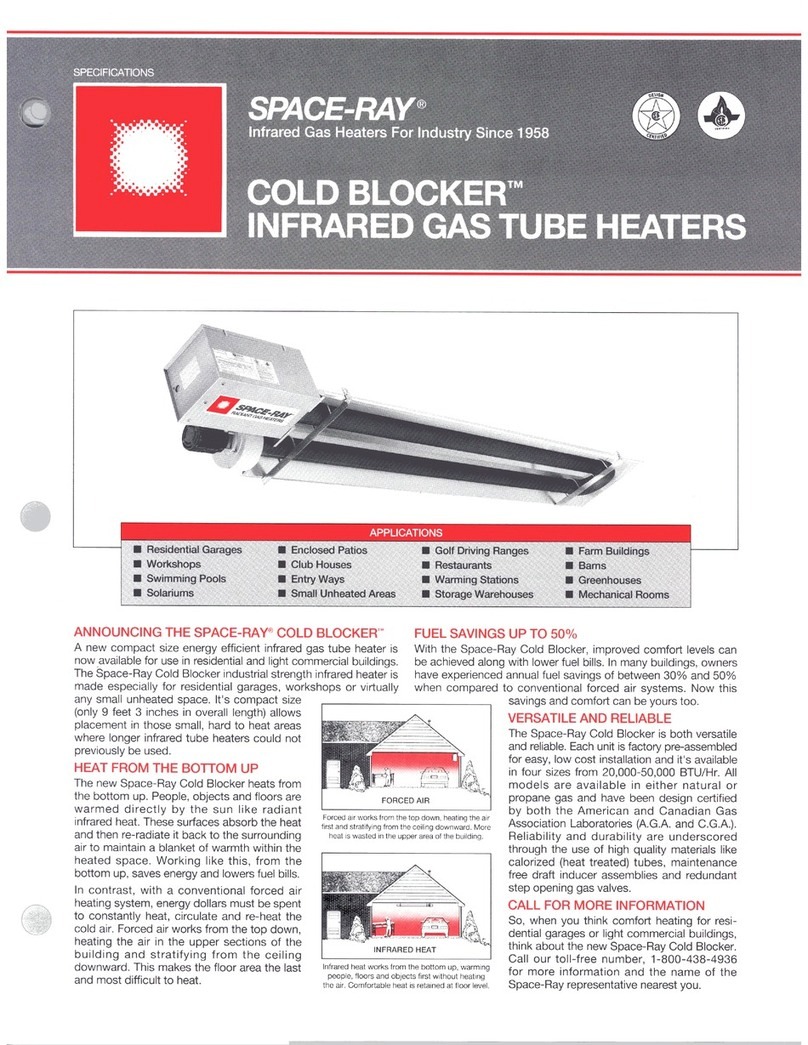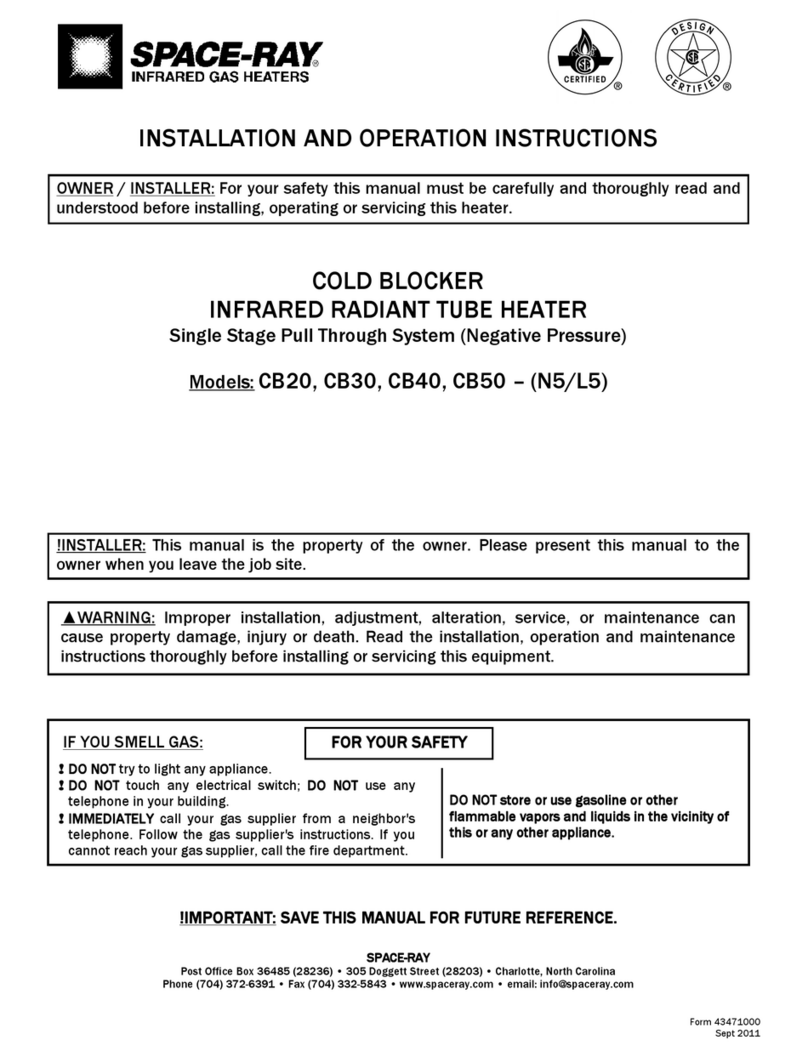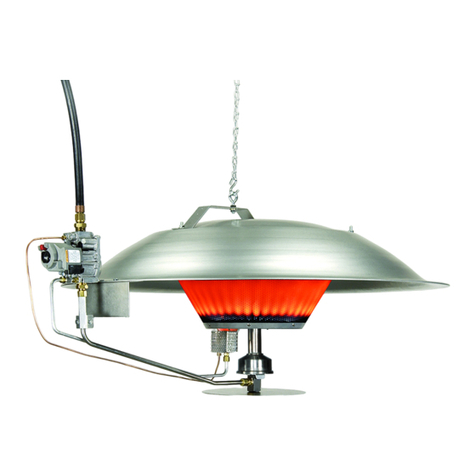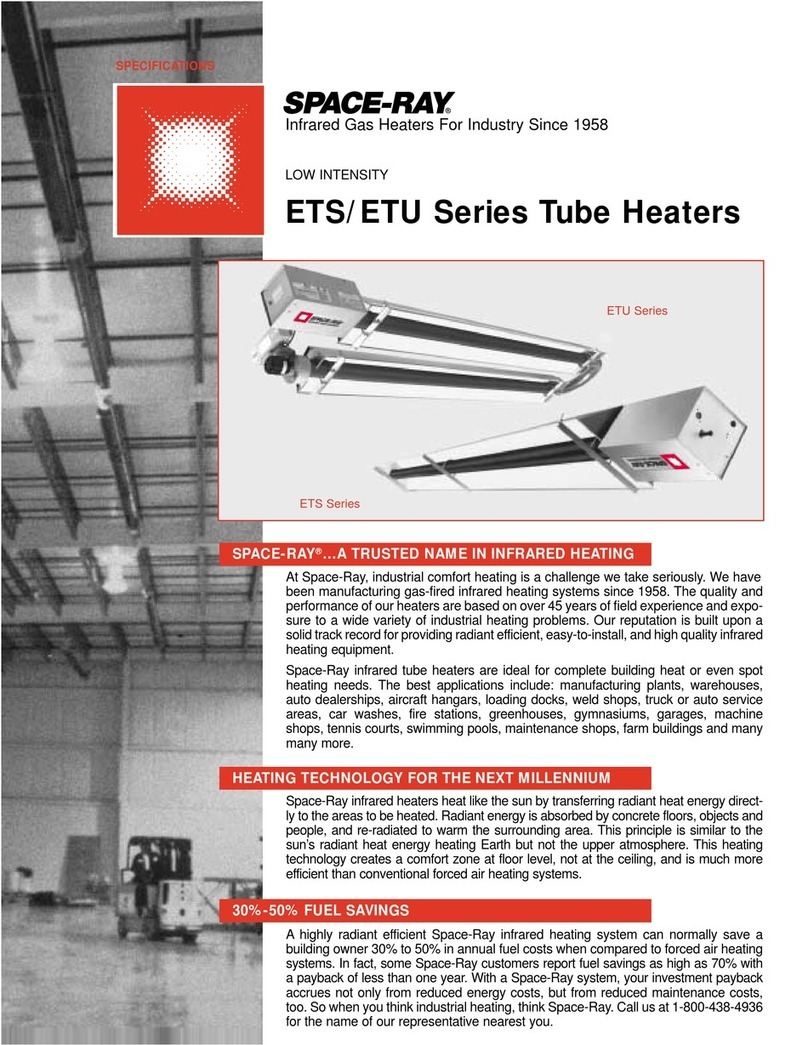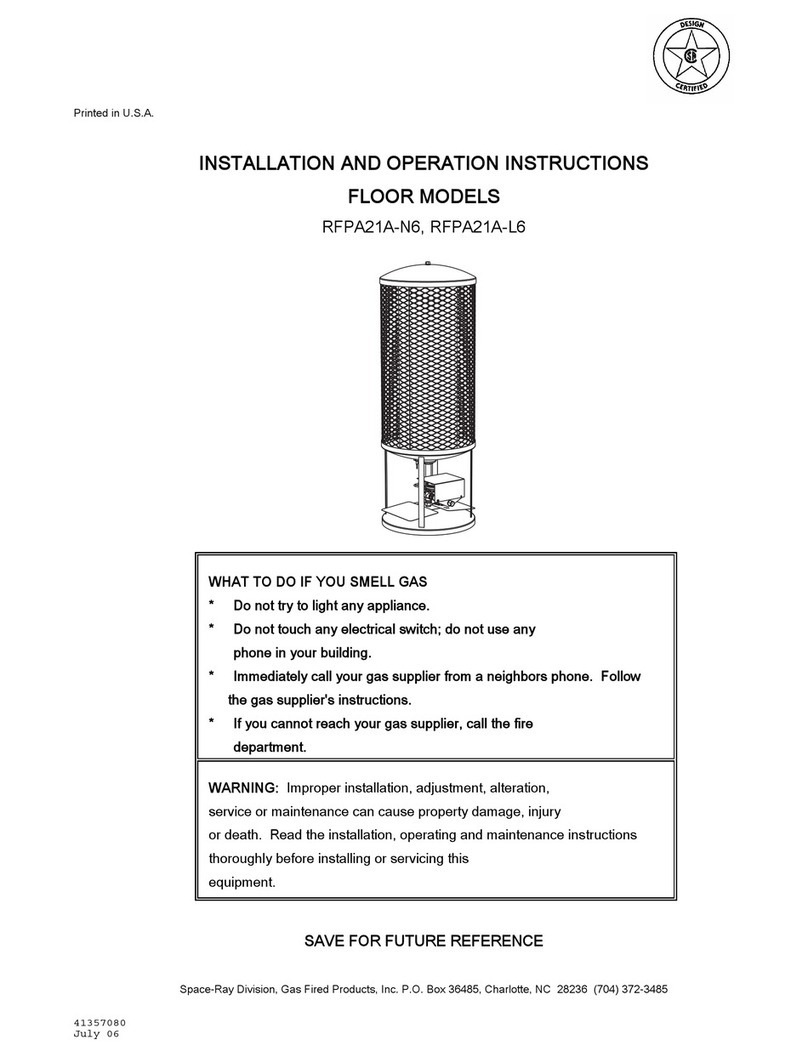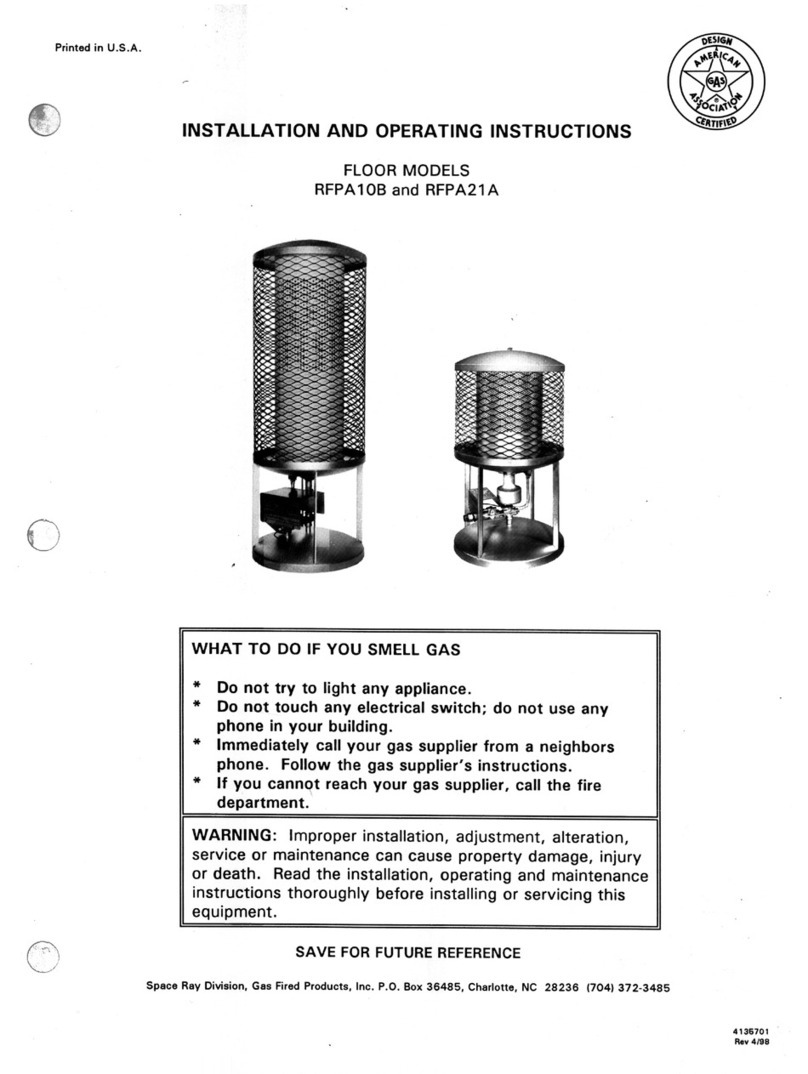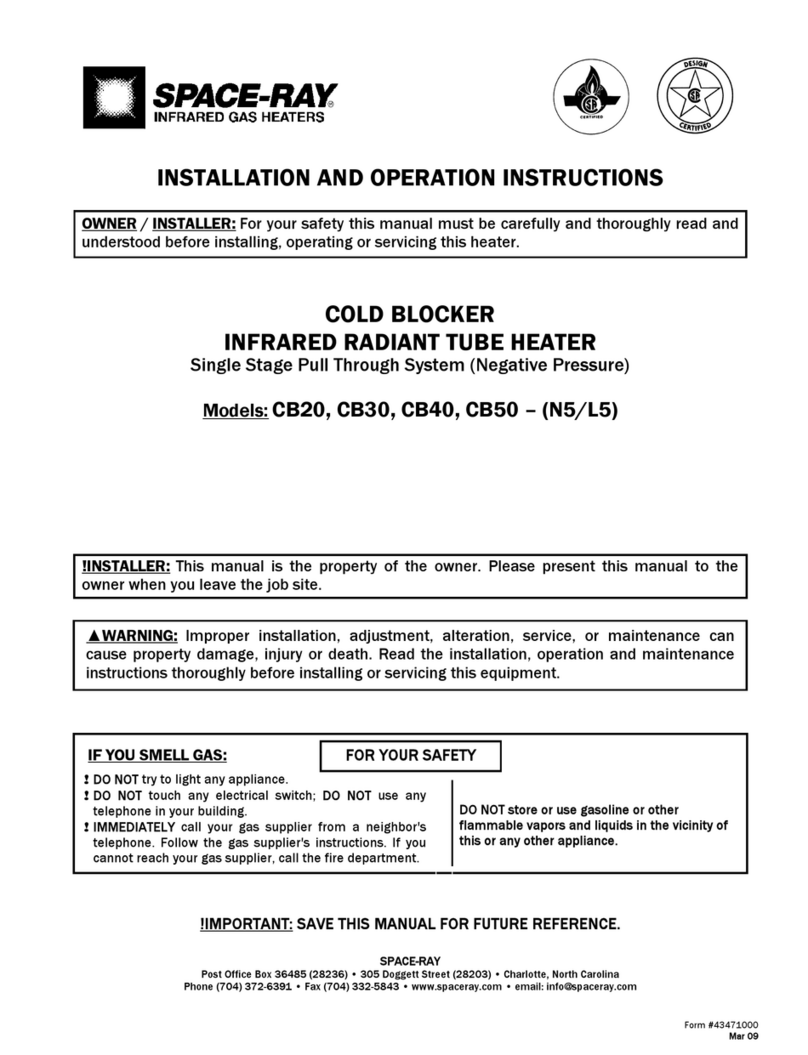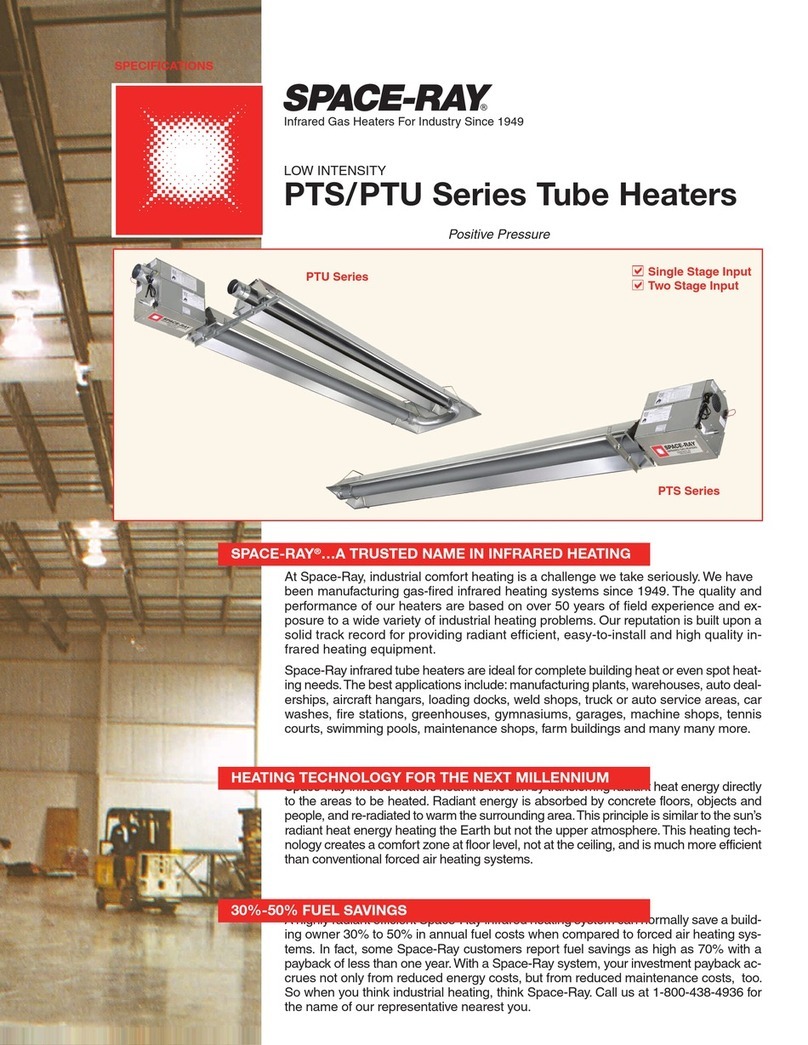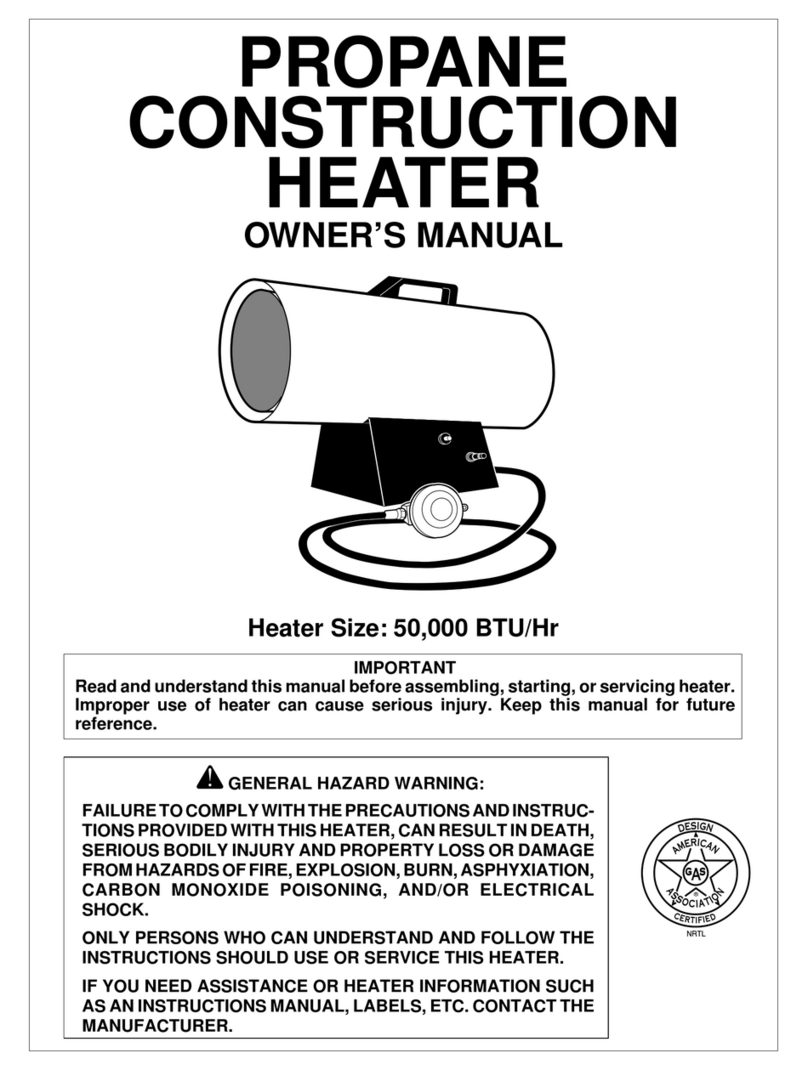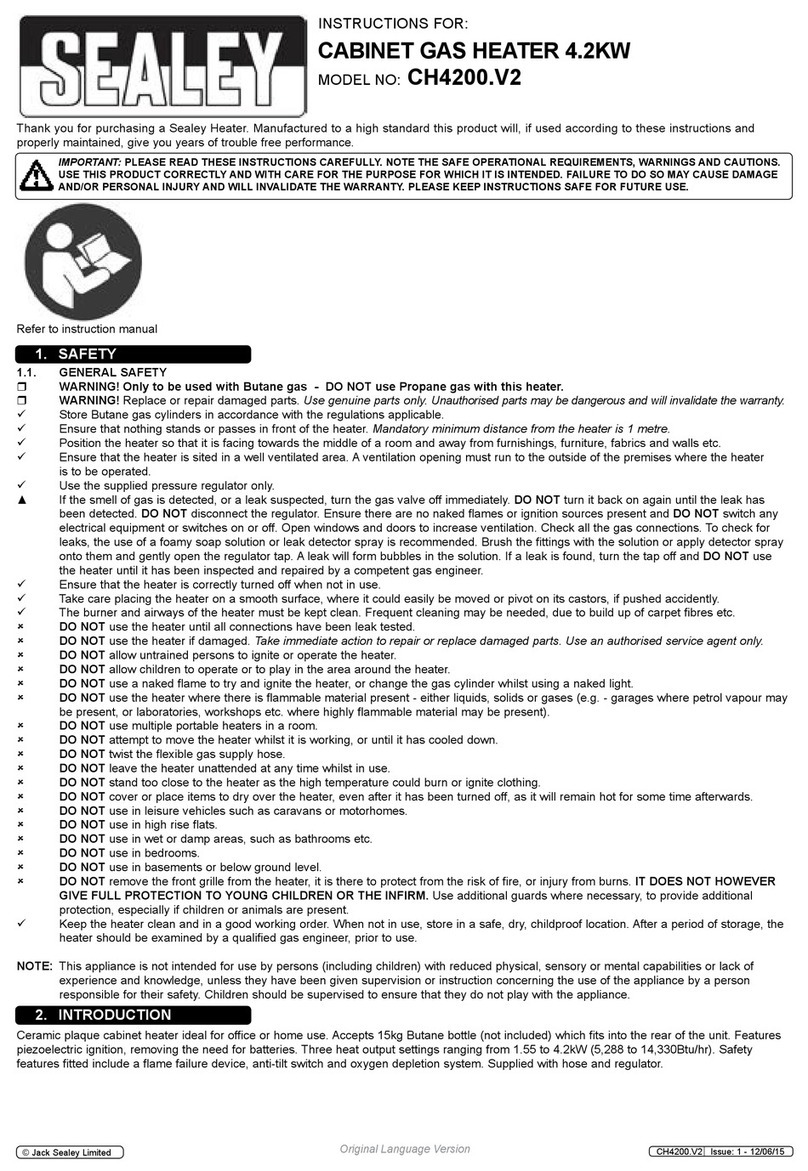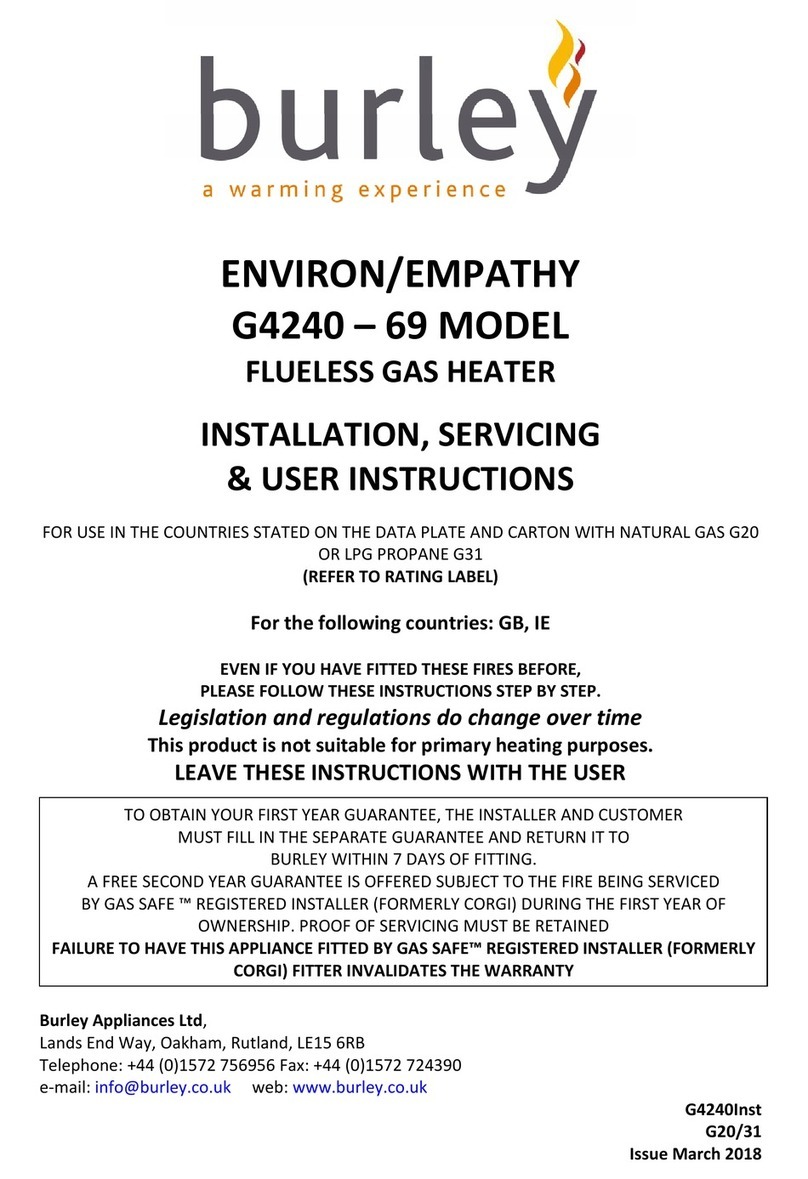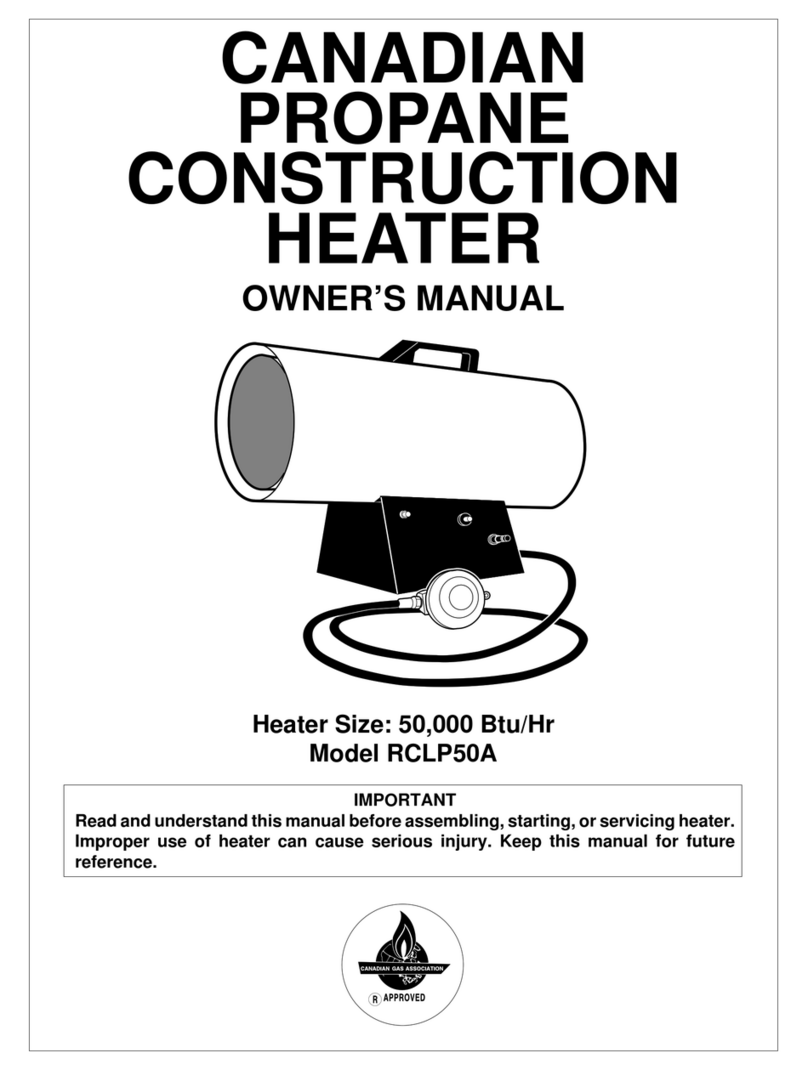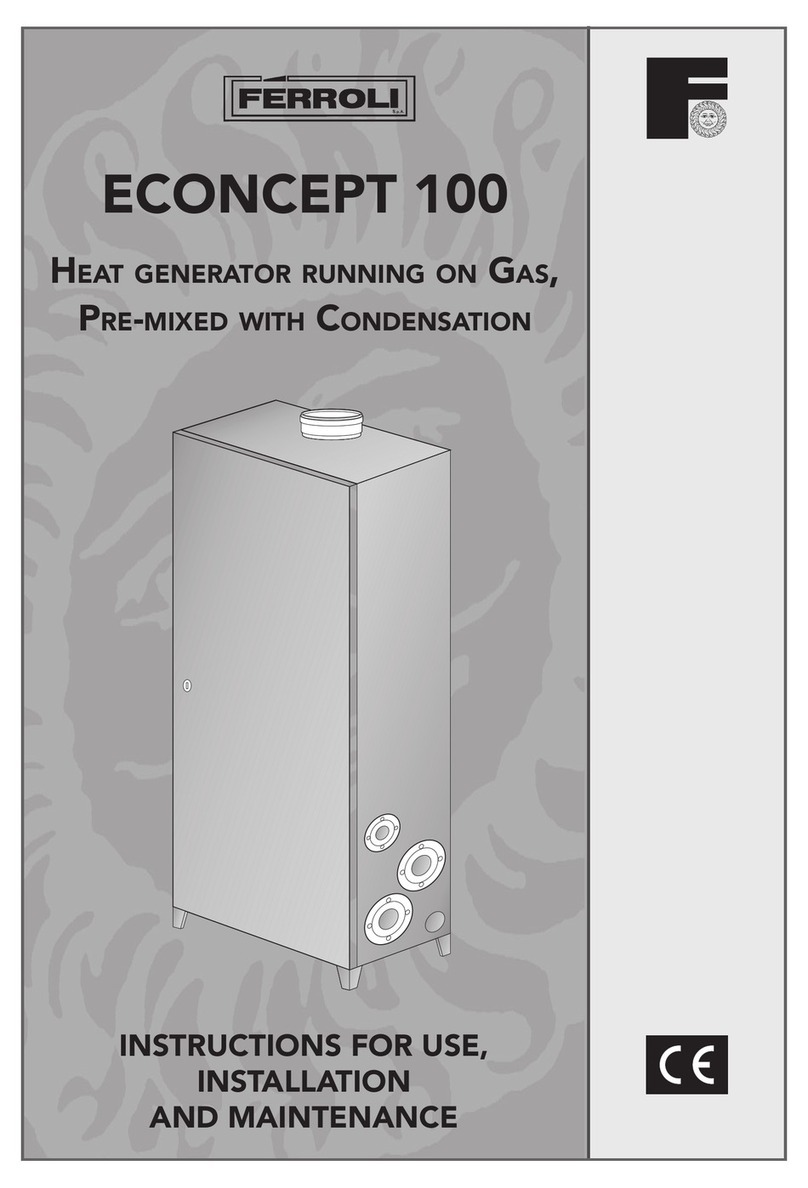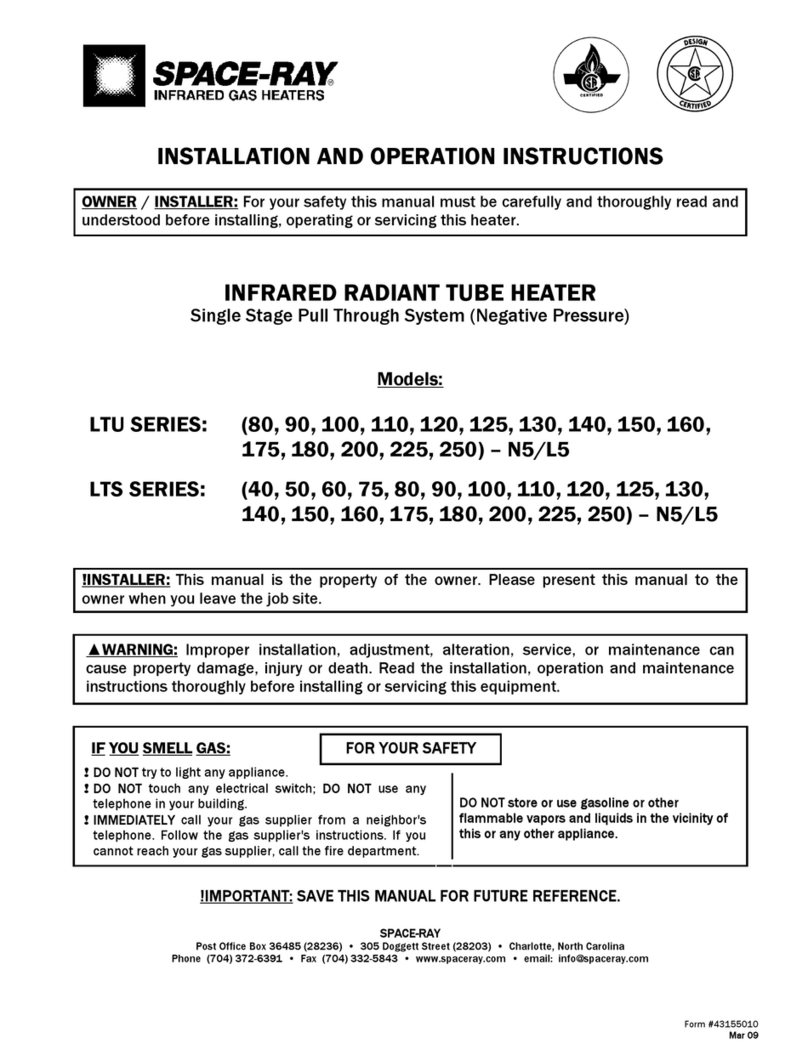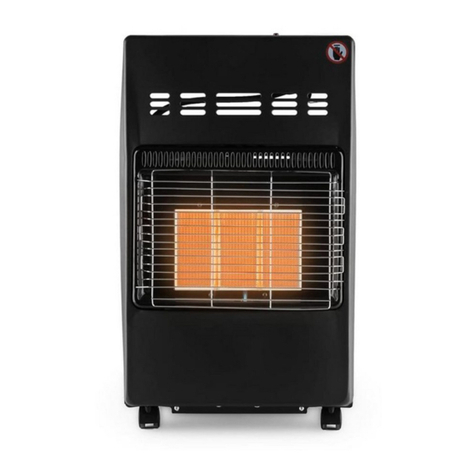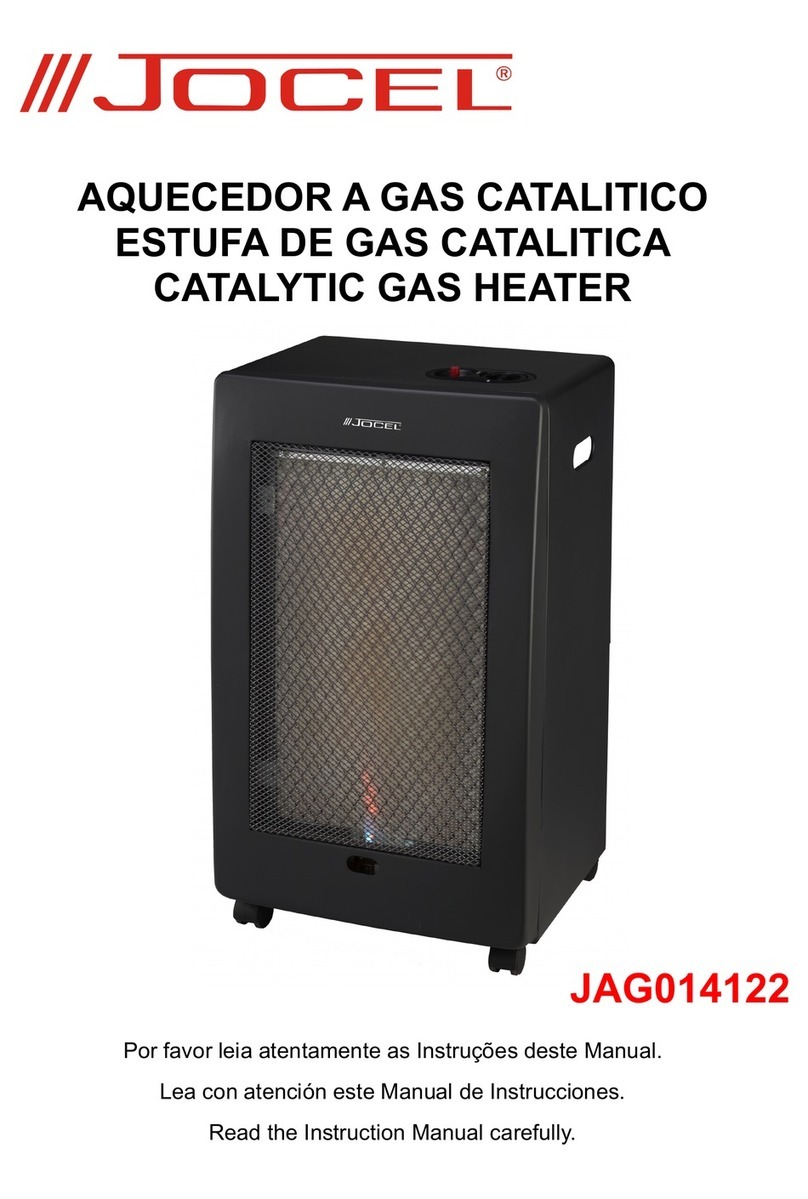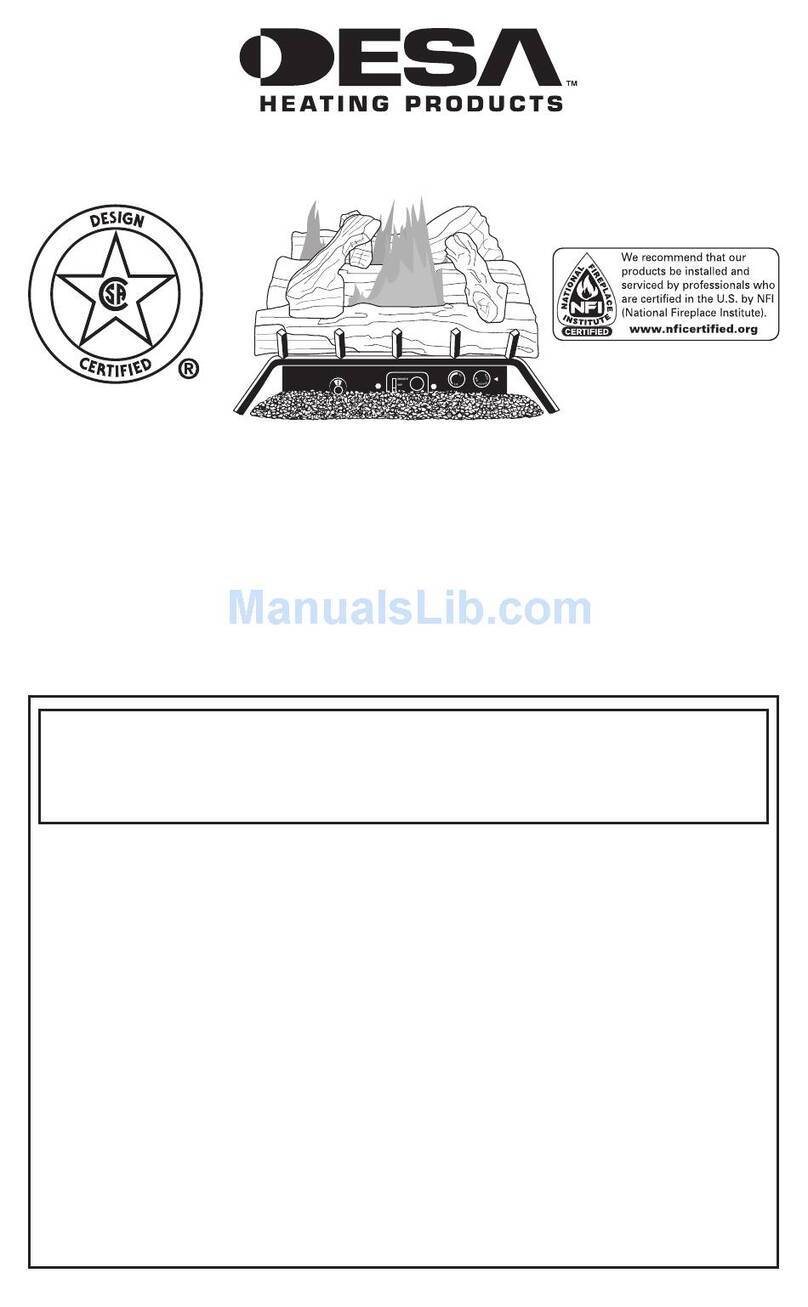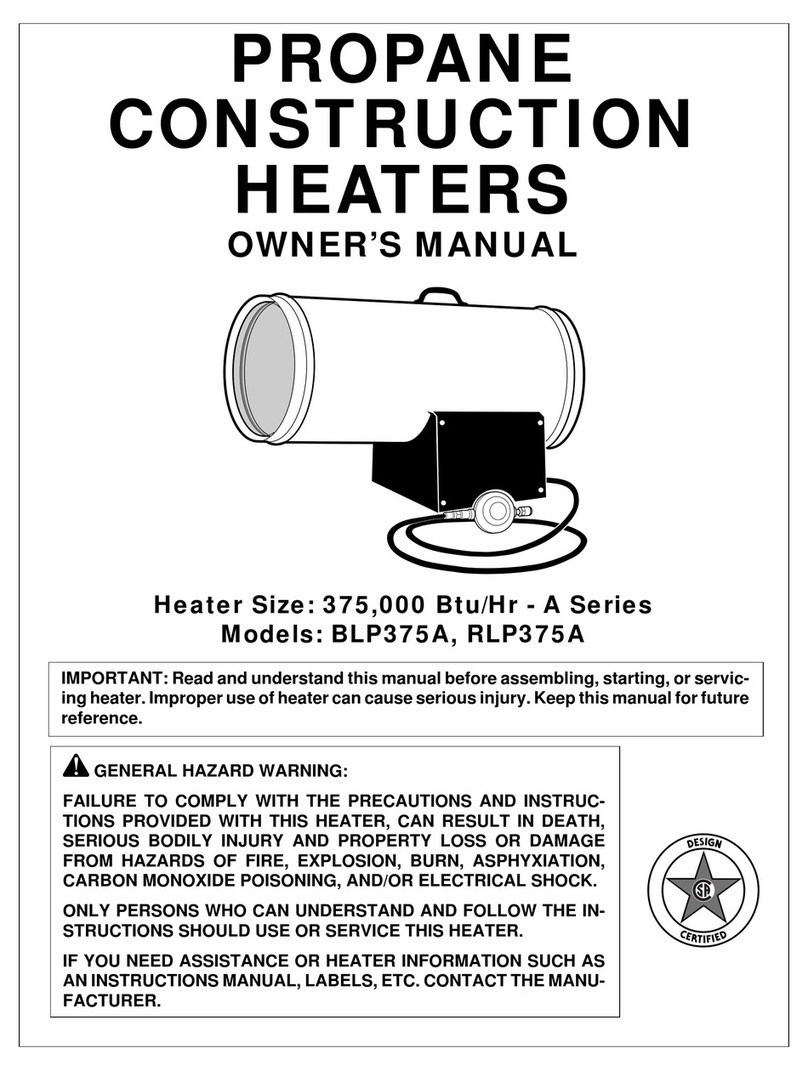
Form No.43539118
May 2013
MALE FTG 45FLARE 3/8TUBEx3/8MPT
MALE FTG 45FLARE 3/8TUBEx1/2MPT
HOSE,3/8IDx6FT with 3/8"F SWIVEL FITTINGS
HOSE,3/8IDx10FT with 3/8"F SWIVEL FITTINGS
Make sure connection is secure before turning on the gas. See section 7a for procedures to test
for gas leaks before putting the brooders into operation.
FIGURE 5c
6. It is strongly recommended that a field installed manual
shut-off valve be installed in the gas piping to each brooder.
This will allow service of individual brooders without having
to shut down the entire gas supply system. When installing
the gas line, it is recommended to connect a sediment trap
(see illustration, previous page) in the gas line at a point
before the gas line enters the house. This trap or “drip leg”
acts to trap impurities and water that can condense out of
the gas. It helps to keep impurities from entering the
appliance and causing potential damage to gas valves, etc.
Periodically remove the cap from the drip leg and drain any
accumulation of dirt and/or water.
7. After all gas connections and adjustments are made, check all gas connections for leaks (not
just the gas connections at the brooders) using a heavy soap suds solution or by using one of the
methods listed in Appendix D of the National Fuel Gas Code. WARNING: DO NOT USE AN
OPEN FLAME OF ANY KIND TO TEST FOR LEAKS!
8. It is recommended that a pressure gauge be installed at the end of the gas piping run to allow
you to check the gas supply pressure in the system. This needs to be capable of accurately
measuring in units of inches of water column or mbar.
7a. INSTRUCTIONS FOR TESTING FOR GAS LEAKS AND PROPER GAS
PRESSURE
WARNING: D O N OT OMIT THESE TE ST S !
TESTING THE INSTALLATION FOR GAS LEAKS:
1. Inspect all connections and appliance valves to be sure connections are wrench-tight and that all
appliance valves are closed, including the pilot valves.
2. Connect a low-pressure test set to the low pressure piping system just upstream of the appliance
regulators and control. NOTE: A dry gauge manometer is available as an accessory (Part No.
43649000).
3. Fully open the LP gas container valve slowly to pressurize the piping system. Once the system is
pressurized and stabilized, close the container valve tightly.
4. Observe the indicated pressure on the low-pressure test set gauge. This reading should be
approximately equivalent to the set delivery pressure of the final stage regulator. Now, slowly
open one burner valve or pilot valve on the appliance to vent off just enough gas to reduce the
pressure on the test gauge by 1” water column, then close the burner or pilot valve.
If the pressure remains unchanged on the gauge for at least 10 minutes, the system can be
assumed leak-tight. If a drop in pressure does occur, it indicates a leak in the system.
If the pressure drop occurs, check the joints, connectors, and other possible points of leakage with




















